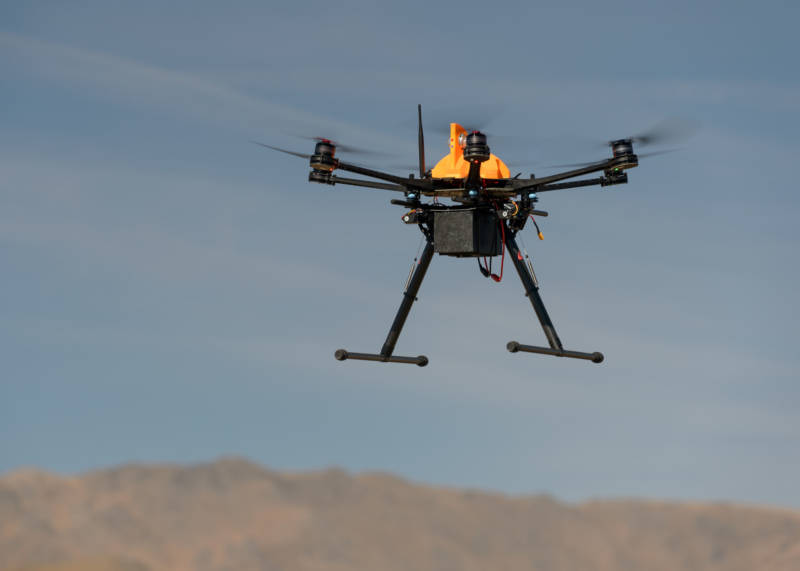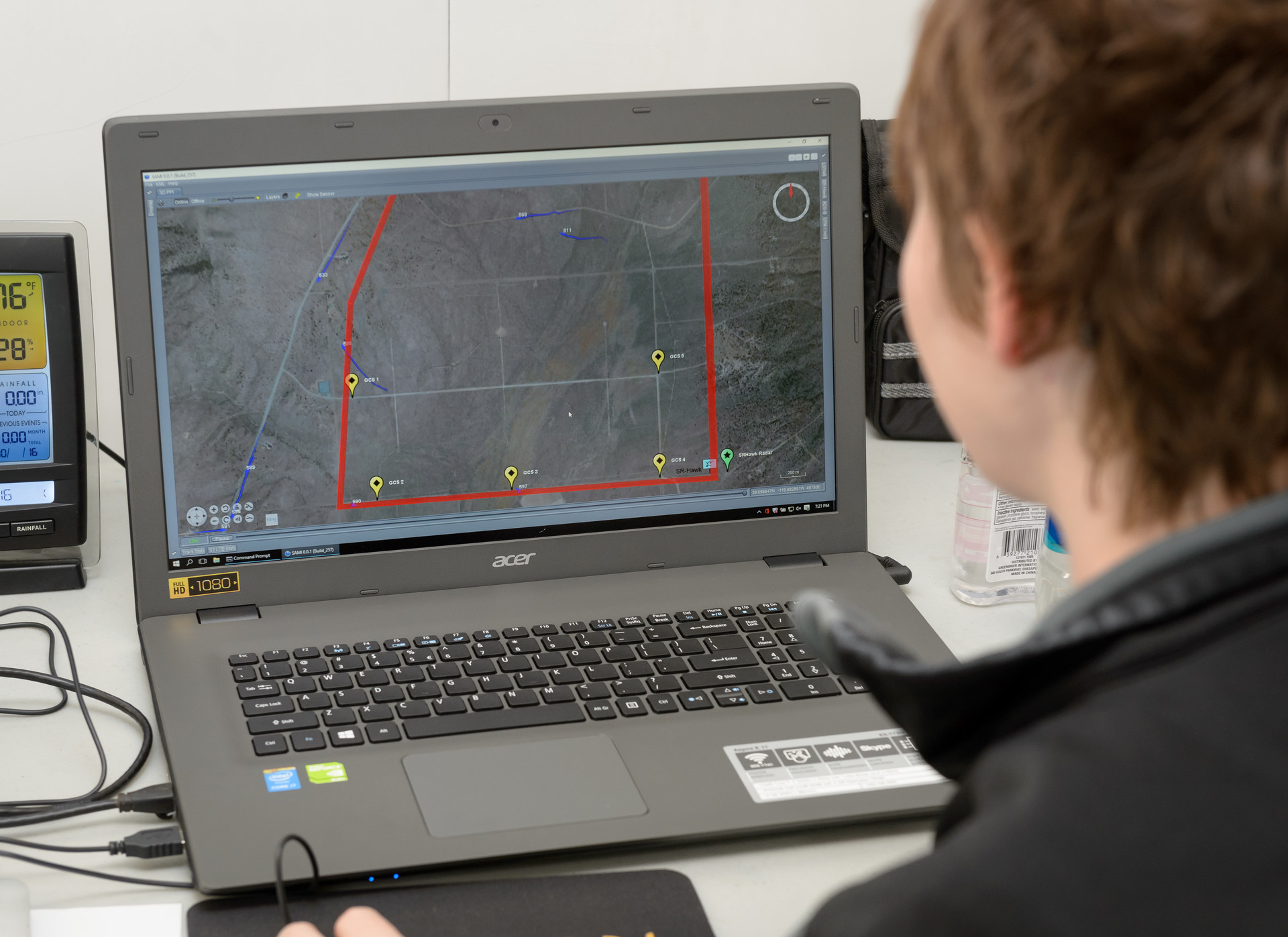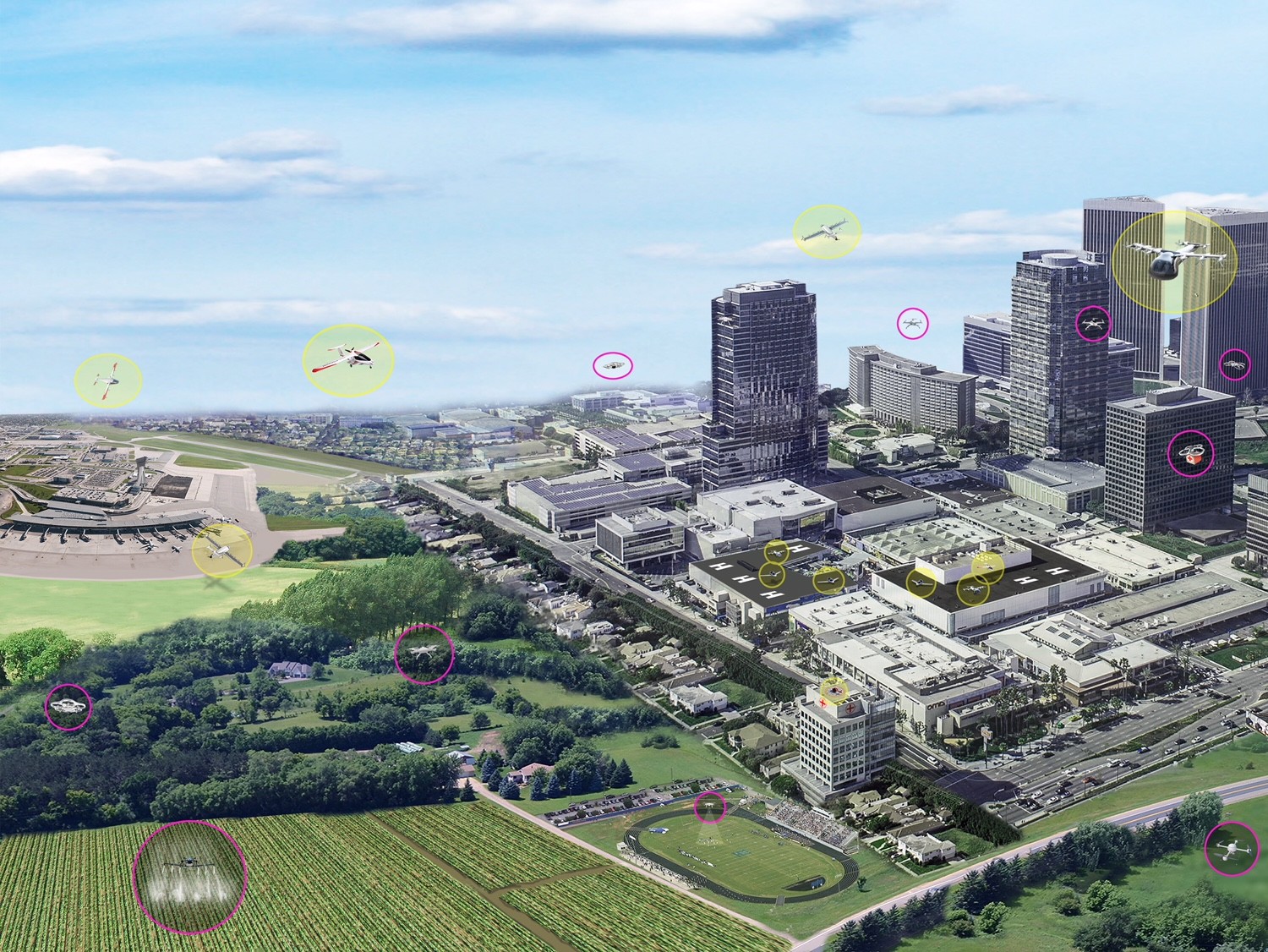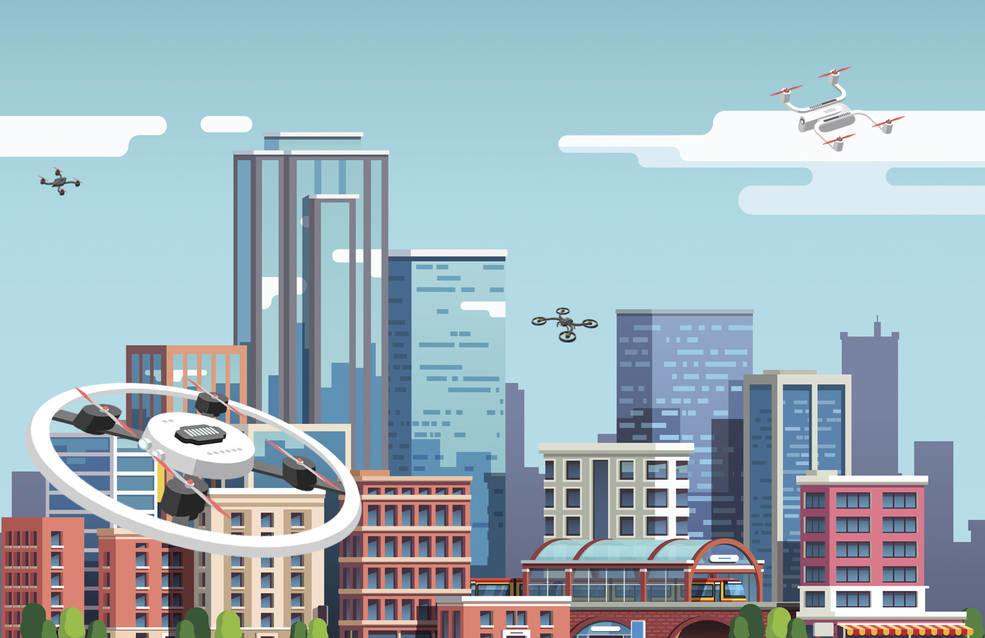You may have noticed a growing number of retailers threatening to make deliveries by drone in the near future. Amazon, Google, Uber and others have all been developing their own systems, and while the technology might not be there quite yet, experts say it will be soon.
How NASA Ames Is Helping the FAA Brace for the Rise of Delivery Drones

As those threats become reality, who’s going to manage all of that potential chaos in the skies above us? Well, the agency that already manages American airspace: the Federal Aviation Administration. Eventually.
First, researchers at NASA Ames in Mountain View are developing the air traffic management system to make it possible for Amazon to deliver pizza to your neighbor without harming you in the process.
Unmanned aircraft systems are already in the skies for all sorts of uses, including law enforcement, search and rescue, firefighting, agriculture, medical supply delivery, moviemaking, journalism and even real estate. But these are limited-use cases compared to the hundreds of thousands of commercially owned vehicles expected to take to the skies when retailers and restaurants are given the go-ahead.
NASA Ames researchers in Mountain View are imagining something akin to what air traffic controllers do for passenger planes, but with cloud-based software. They’ve been working on this concept since 2015, and conducted multi-drone tests this year in Nevada and Texas.

To start with, NASA Ames researcher Abhay Borade explained, every drone operator will have to log in with a plan for every flight.
“That volume, that area, that time and space, altitude. Then the system will check it against various parameters. Are you flying in a restricted air space? Are you in a national park? You’ll get a message back either that you’re accepted or rejected,” Borade said.
Once the drone is airborne, its operator can track it on the software. The system communicates in real time what the drone is encountering after it leaves the operator’s line of sight: buildings, birds, bad weather and so on.
There’s a presumption the unexpected can and will happen, but it’s the drone operator’s responsibility to decide how to manage risk, at least, outside of a law enforcement emergency.
In such a case, package delivery drone operators would be ordered to vacate the affected area, according to Ron Johnson, project manager for the unmanned aircraft systems traffic management project.

What happens if a drone operator refuses to comply? Or behaves badly in a myriad of other ways? The software can easily identify drones gone rogue, and it maintains records of the event.
While NASA lays the technical groundwork for this brave new world, there will be plenty of opportunity for new rules and regulations to keep bad actors in line.
“It’s not going to happen all at once. When the FAA allows more and more operations, I think there’ll be constraints put on [drone traffic],” Johnson said.
He’s not just talking about the FAA establishing rules. Software can manage a nearly infinite variety of local and regional rules, too.
Let’s say the good citizens of Mountain View — who already live in an area full of loud noises — don’t want drones buzzing on top of all that. Or perhaps they decide to geo-fence certain areas, and require drone traffic to travel or land in prescribed zones.

As of now, in the U.S., FAA rules state that delivery-style drones must weigh less than 55 pounds and fly up to a ceiling of 400 feet.
“From my experience, if a drone is flying 400 feet above, you hardly hear it,” Johnson said. “Mountain View may say, ‘OK, you can fly a drone, but it can’t be below 300 feet.’ That type of constraint would be embedded into the system here. So that when somebody proposes flying at 200 feet, that plan is going to get rejected.”
What happens if a hacker gets into the system, or into the drones? Johnson professes to have a high degree of confidence that won’t happen. “We’re doing everything now that we’re required to. The companies themselves, it’s in their interest to keep their drones from being hijacked or fouled with,” he said.
So when will you get a pizza delivered by drone?
Short answer: Not soon, even though the FAA has recently allowed a handful of companies to test drone delivery programs in urban and rural areas, and has even gone so far as to certify Alphabet’s Wing Aviation to operate as an airline.
While more than 50 countries belong to Joint Authorities for Rulemaking of Unmanned Systems, a final set of standards has yet to be agreed upon. Johnson anticipates other countries are looking to the U.S. to take the lead.
He went on to say, “We finish our major testing this summer. It will take us several months to document what we found and then the FAA gets into their processes. Right now, they already are soliciting public feedback for rules for flying over people. It’s perhaps less than a decade, but more than a couple of years [away].”
That should give us all a little more time to get used to the idea.
Meanwhile, NASA researchers on another team are developing a similar construct for what they call urban air mobility, or what we proverbially call air taxis.